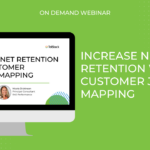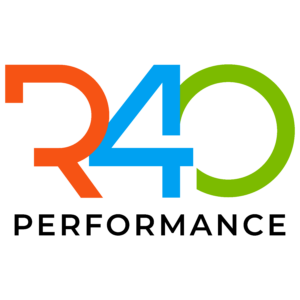When a founder makes the great leap and hires a sales team, there is a high degree of likeliness that your newly hired seller will not have the same success you have had closing deals.
This seems to be opposite of logic, but it’s not. Founders have credibility, they have industry knowledge, buyers want to buy from founders. If you put a professional sales rep in front of the same deal that a founder is in front of, the odds of a founder closing that deal is greater than 50%. The average win rate for B2B enterprise sales? Closer to 20%.
Part of this reason is that your new rep isn’t going to get many of those fast moving referral deals. They will need to find cold opportunities which will always have a lower win rate.
So how do you ensure your sales investment will pay off?
Well, the good news is that there are several leading indicators for you to look at. We’ll review the ones that matter most, and how to coach for better performance.
B2B software deals are typically high lifetime value (i.e. 5-6 figures), and long initial sales cycle hovering between 90-180 days. This lead time means that you can gauge your success months in advance.
Let’s say your annual goal is to add $1M in new ARR bookings. Assume 60% comes from new customers. With an average deal size of $50K, that means you need 12 new customer additions to hit your $600K target. Now let’s assume you have a win rate of 25%. That means you need to find 48 new customer opportunities a year, or four per month.
So with this in mind, you now have a leading gauge of performance. If your team is having trouble finding new opportunities, you’ll have a tough time hitting your numbers six months from now.
Key Metrics
There are a few metrics you need to keep an eye on:
Metric | Importance |
Bookings | This is the ultimate measure. Bookings are contractual commitments that will turn into future revenue and cash. Split bookings between incremental recurring revenue and one-time revenue like services or hardware (which have less value). |
Sales Velocity | This is a gauge that helps identify if you are tracking to hit your number. If your goal is $1M in Sales, your velocity should be $2,700, or in other words you should be adding $2,700 per day in new sales. Sales Velocity is calculated as the number of opportunities in your funnel x average deal size x win rate % over average sales cycle length. |
Opportunity Creation | Probably the most important leading metric. In the case above, we want to see four new customer opportunities per month. You want to identify the ‘last touch source’ of opportunities. That is, what was the thing that pushed it over the edge to be an opportunity? (i.e. event, cold call, inbound inquiry). |
Win Rate | This is the count of deals won over the count of deals won and lost. Look at the differences by opportunity size, company segment, region, seller. You’ll spot differences in success and will want to double-down in areas where you have more success. |
Meetings Booked | A precursor to the opportunity creation. How many meetings are you booking, how many are kept, who generated the meeting. |
Sales Activity | If you don’t plant the seed, you won’t get the harvest. Sales activity like phone calls, emails, LinkedIn touches; are great indicators to future success. A seller who isn’t putting in the miles needs to have a great reason. |
Funnel Hygiene
Because opportunities are such an important indicator to future revenue, you want to ensure as much success as possible, but also have an accurate prediction for future revenue.
Not all opportunities are equal. You instinctively know that some sellers will create opportunities that are not opportunities at all.
Things to watch out for:
- A lack of activity such as next actions and last actions
- A lack of engagement on the buyer’s end
- Single threading, where the seller is only engaged with one buyer (most B2B buying decisions are 3 or more buyers)
- No narrative information (business pain, outcomes)
- No identification of incumbent systems or competitors
- No definition as to what the opportunity is selling (i.e. Adding products or services)
- Placeholder values versus system calculated values from added products or services
- Aging opportunities. If an opportunity is older than your average sales cycle, it’s unlikely to close.
- Opportunities stuck in stages, especially the first stage.
Reinforcing good practice will make the seller more successful. A good seller will be receptive to this feedback, bad sellers will not be receptive. This alone is a great indicator of your future success.
Funnel needs to be managed at least monthly. Do it as a group, but keep in mind this is not the same thing as Sales Coaching.
Sales Coaching
To improve seller performance, especially with new sellers, it’s important to invest time into coaching. Four main areas:
Story telling: It’s important to turn your value proposition into a story. Customer examples, origin stories, etc. Reps only need one story they can repeat over and over again.
Discovery questions: Making sure the reps know the insightful questions they should ask in discovery. Not “BANT” (do you have budget?), but actual questions about the business that you can ultimately relate back to your value proposition.
Objection handling. Practice objections each week
Deal Coaching. Pick a deal each week and run through the account strategy. Identify key information like:
- Trigger event: Why now, why not last year or next year. Why change? There is always something that sparked a need.
- Buyers: Who has influence, how are they measured, what do they need, do you have their vote.
- Competitors. Who else is in the deal, what are your weaknesses to them?
- Missing information: What information do you not have that you would like to have
With this framework, you can create a call plan that drives your deals forward. Every rep can use coaching. Sales is a team sport.
Ride-alongs and recorded calls.
I used to be against ride-alongs but I now realize that mistake. Most reps are a distant shadow of the founders and they want to be better. The best way to help them is by being on sales calls with you, or at the very least, having calls and meetings recorded and then rewatched later providing feedback and coaching after the fact. In addition, when sellers know they are being accompanied by the founder, or being recorded, they will be better prepared, and their performance will improve. Then they will see the direct correlation between being prepared and being successful; cementing this behavior.
This is very time-consuming but if a sales cycle takes 40 hours of effort to close, and your two to three hours of contribution can improve success, then it’s worth it. Opportunities are at a premium and take most of the effort, so you don’t want to blow it.
Conclusion
Founders who can completely give up the reins on sales deals have passed the ultimate test, but it’s more likely that founders will need to take a 3-2-1 approach. That is, go from 3 days per week selling, to 2 days, and then finally 1 day.
If your sales team isn’t quite hitting the mark, or you’re still spending more time than you’d like riding shotgun on deals, it might be time to bring in some structured support. Coaching isn’t just for underperformers. It’s how good reps become great, and how founders finally step back without watching the pipeline dry up. If you’re ready to build a sales team that can win without you in the room, we can help.
Learn more about our Sales Coaching and Sales Operations service and how we work with founders to turn sales into a repeatable, scalable engine.








